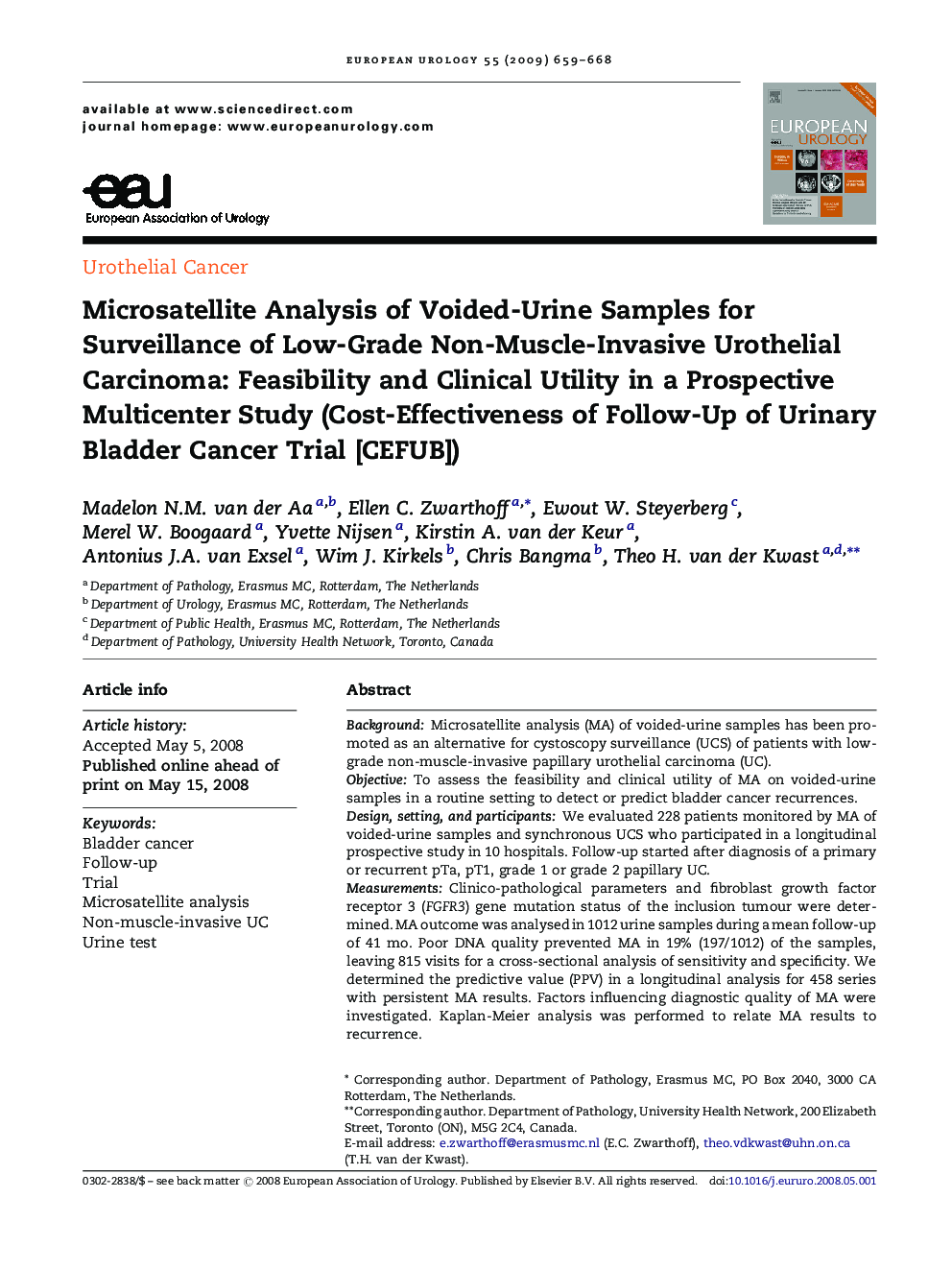| Article ID | Journal | Published Year | Pages | File Type |
|---|---|---|---|---|
| 3924908 | European Urology | 2009 | 10 Pages |
BackgroundMicrosatellite analysis (MA) of voided-urine samples has been promoted as an alternative for cystoscopy surveillance (UCS) of patients with low-grade non-muscle-invasive papillary urothelial carcinoma (UC).ObjectiveTo assess the feasibility and clinical utility of MA on voided-urine samples in a routine setting to detect or predict bladder cancer recurrences.Design, setting, and participantsWe evaluated 228 patients monitored by MA of voided-urine samples and synchronous UCS who participated in a longitudinal prospective study in 10 hospitals. Follow-up started after diagnosis of a primary or recurrent pTa, pT1, grade 1 or grade 2 papillary UC.MeasurementsClinico-pathological parameters and fibroblast growth factor receptor 3 (FGFR3) gene mutation status of the inclusion tumour were determined. MA outcome was analysed in 1012 urine samples during a mean follow-up of 41 mo. Poor DNA quality prevented MA in 19% (197/1012) of the samples, leaving 815 visits for a cross-sectional analysis of sensitivity and specificity. We determined the predictive value (PPV) in a longitudinal analysis for 458 series with persistent MA results. Factors influencing diagnostic quality of MA were investigated. Kaplan-Meier analysis was performed to relate MA results to recurrence.Results and limitationsCross-sectional sensitivity and specificity of MA for detection of a recurrence were 58% (49/84) and 73% (531/731), respectively. One pT1 grade 3 UC was missed. In a longitudinal analysis, the 2-yr risk to develop a recurrence reached 83% if MA outcome was persistently positive and 22% when MA was persistently negative. PPV of MA was higher with wild-type FGFR3 gene status and smoking habits. All four upper urinary tract tumours detected were preceded by a positive MA test.ConclusionsConsecutive positive MA results are a strong predictor for future recurrences, but sensitivity needs to be improved, for example, by patient selection and testing of additional genetic markers in urine samples.
